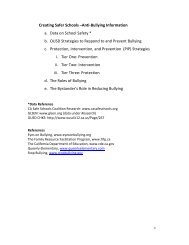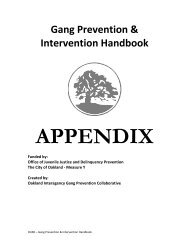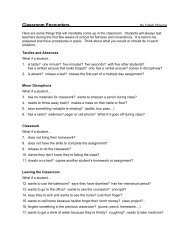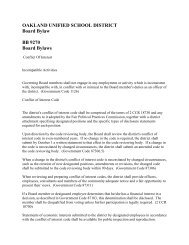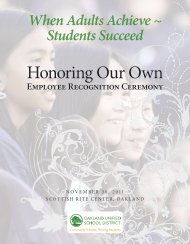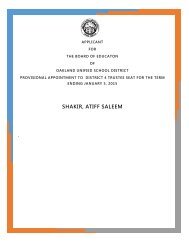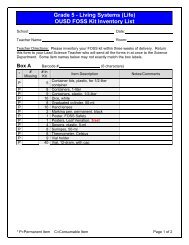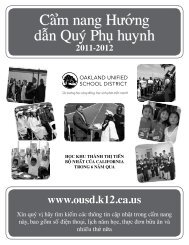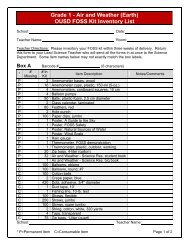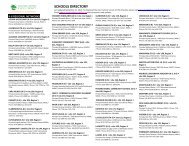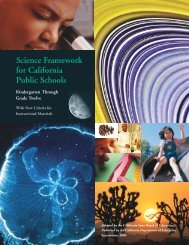Oakland Unified School District Case Study
Oakland Unified School District Case Study
Oakland Unified School District Case Study
Create successful ePaper yourself
Turn your PDF publications into a flip-book with our unique Google optimized e-Paper software.
school size to foster supportive relationships<br />
between students and parents. As one<br />
parent says about the relationships built in<br />
the small school:<br />
It is so important that this school is<br />
small and all the parents and kids<br />
know each other by name and they<br />
smile and they greet each other. It’s<br />
very important that this school stay<br />
small. As a parent, it helps because<br />
we can help kids from other families.<br />
Race doesn’t matter — brown,<br />
black, white, Asian — they all are<br />
welcome, and parents too.<br />
Many parents value the strong personal<br />
connections they and their children have<br />
developed with the principal and her staff.<br />
These relationships are particularly helpful<br />
in fostering the safe and orderly campus<br />
valued by parents. Another parent commented<br />
on the importance of a safe school<br />
in a violent neighborhood:<br />
The number one concern here is<br />
safety. I don’t even feel safe to walk<br />
to school with my children. I feel<br />
scared. Two weeks ago, they killed a<br />
child next to the school. The children<br />
at ACORN are not affected,<br />
we have security and a motorcycle<br />
police, they know when they are<br />
in here they are secure; the crime<br />
doesn’t really affect them. I really<br />
like the school because of the connections<br />
with the staff and teachers.<br />
I feel the kids are safe because the<br />
classes are small and the teachers are<br />
excellent, but I worry about going to<br />
a big middle school.<br />
Not only does AWE seem to provide parents<br />
with a safe option for their children,<br />
the climate is such that parents describe<br />
changes in their children’s attitudes about<br />
school once they began attending AWE:<br />
For my children, being at this<br />
school is a good thing. They didn’t<br />
like preschool, but once we fought<br />
and got them here, they love it,<br />
and they don’t miss a day. Even<br />
if they’re sick, they don’t miss a<br />
day; they love the after-school<br />
curriculum. They enjoy it; two of<br />
them received medals. We’re very<br />
happy with what is going on here<br />
at ACORN Woodland.<br />
The strong sense of school community<br />
is a sharp contrast to AWE several years<br />
ago and to the neighborhood schools<br />
these students would have attended<br />
prior to AWE. By some accounts, “The<br />
climate at the neighborhood school was<br />
horrible. The school was overcrowded,<br />
with teachers packing their materials<br />
around in carts.” 12 The founding of AWE<br />
immediately alleviated many of those<br />
conditions of overcrowding, but it did<br />
not automatically engender a strong<br />
learning climate.<br />
Many of the improvements in school<br />
climate are directly attributed to the<br />
work Kean did in re-visioning the school<br />
with her team of parents and teachers.<br />
According to many teachers, in the initial<br />
years of operation, the school was “all<br />
over the place in terms of expectations<br />
for students and parents.” The substantial<br />
growth in school cohesiveness is<br />
attributed to bringing parents and teachers<br />
together to establish what the school<br />
wants from its students academically<br />
when they leave AWE. They want a rigorous<br />
curriculum that prepares students<br />
to be college-ready from the beginning of<br />
their school experience.<br />
OUSD <strong>Case</strong> <strong>Study</strong>: ACORN Woodland Elementary 9



